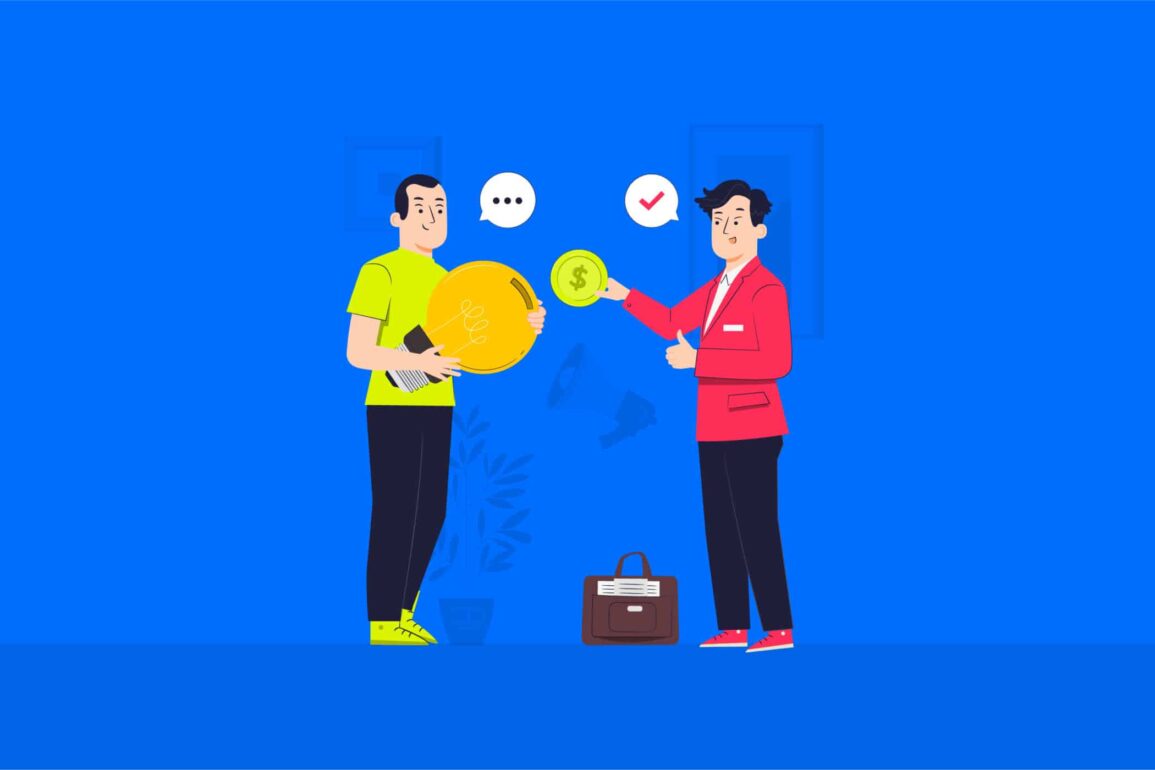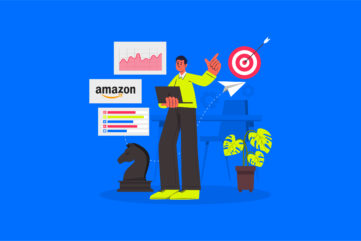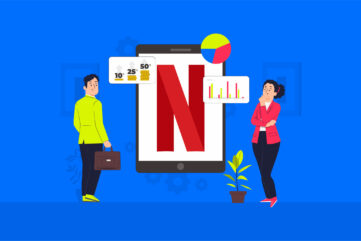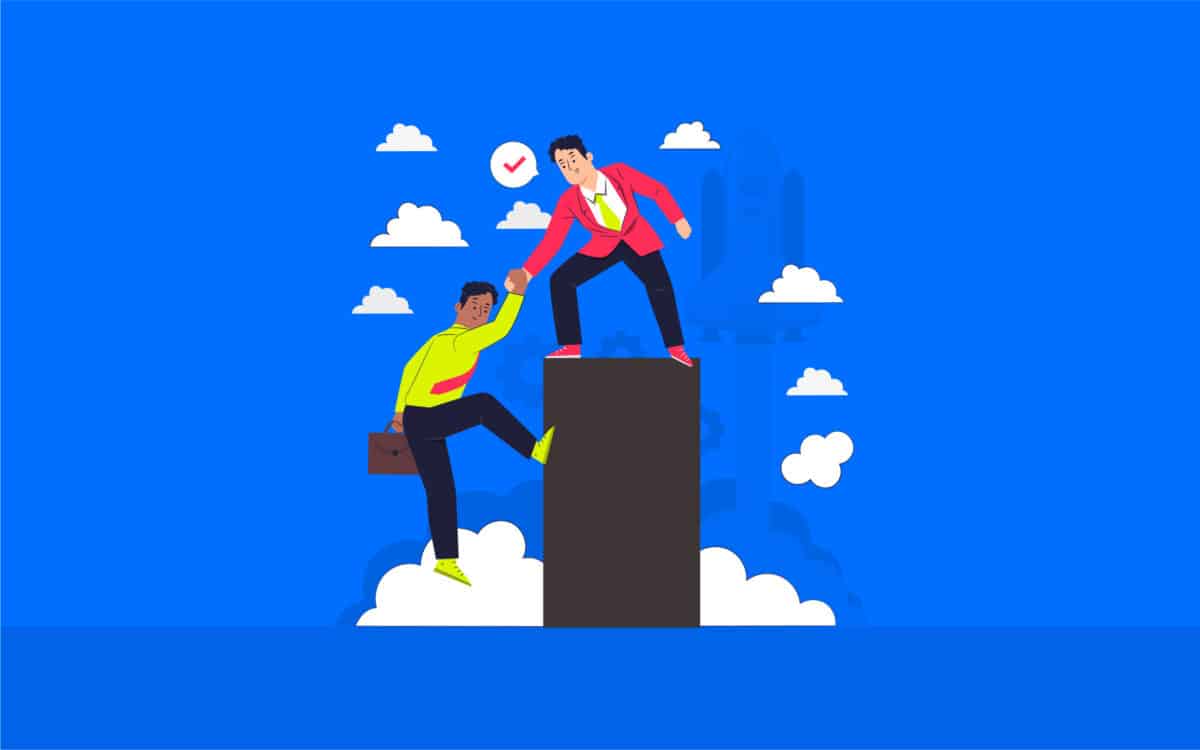How does sponsorship work and what does a sponsor do?

How does sponsorship work? What does a sponsor do, and what are the benefits of investing in sponsorships? These are all questions you may be asking if you’re considering partnering with another company, entity, or event to boost brand awareness.
Sponsorship is one of the key promotional strategies companies can employ to strengthen their connections with their target audience, expand reach, and boost sales. It’s a form of “relationship marketing” in which two organizations or entities work together to achieve mutual benefits.
Sponsorships are a focused form of advertising designed to provide companies with a direct, emotional connection to their target audience. Companies choose to support entities such as charities or sports teams that already have a direct link to the people they want to reach.
The result is access to new potential sales opportunities and a stronger brand reputation.
In return for the various benefits sponsorships can bring, business “sponsors” need to provide something of equal value to the groups they support. This can sometimes mean making a financial donation or investment.
However, organizations can also provide countless other valuable resources, from marketing to services.
Let’s take a closer look at how sponsorships work and what sponsors do.
What are sponsorships? How does sponsorship work?
So, how does sponsorship work? Let’s start with an introduction to what sponsorships are.
Sponsorships are partnerships between a company and a complementary entity. Within the relationship, one party (the sponsor) delivers support through funding, services, or resources to the other party (the beneficiary).
In return, the beneficiary promotes the sponsoring brand in various ways, from placing their logo on sports vests to showcasing signage at an event.
The involvement of a secondary party is part of what distinguishes sponsorship from a traditional advertising campaign.
In the past, the cost associated with connecting to a well-known entity, such as a sports team or charity, has led many organizations to believe this strategy is reserved for larger companies. However, in recent years, sponsorship has become increasingly accessible.
Today’s companies don’t have to target global groups for sponsorships. Many smaller brands get involved with local sports teams and events to keep costs low and target a specific audience. Indeed, many smaller local entities rely heavily on sponsorships for funding and support.
Additionally, sponsorships are one of the most long-lasting forms of marketing. Companies have partnered with other organizations for promotion for over 100 years.
The chances are you’re already familiar with certain examples of sponsorships. If you’ve ever seen a sports team wearing another company’s name on their uniform, you’ve already seen sponsorships in action.
If you’ve noticed a company’s logo presented at an event, you’ve seen another example.
What are sponsors? What are the rules for being a sponsor?
So, what are sponsors? As mentioned above, sponsors are one of essential parties in a sponsorship relationship. They’re the company responsible for providing support and resources to another entity in exchange for brand growth.
A sponsor can be a company, an individual, or a simple investor.
The role of the sponsor is to aid the other organization in achieving its goals. In the case of an event sponsorship, a sponsor might provide a group with funding to create the event or provide crucial resources, such as a venue, signage, or free products for gifts and contests.
In some cases, a sponsor will exchange their services for sponsorship marketing. A catering group may provide food for an event in exchange for promotion.
The rules for being a sponsor vary depending on the situation. In most cases, there are no hard and fast rules for who can become a sponsor. However, both the sponsor and the beneficiary need to agree on how the partnership will work.
Who are the beneficiaries in sponsorships?
The beneficiaries in a sponsorship agreement are the party receiving resources or financial support in exchange for their promotional effort. These groups or individuals are responsible for assisting the sponsor in their advertising efforts in exchange for a specific benefit.
Beneficiaries may include:
Sports teams
Local, regional, or global sports teams regularly have sponsors to help fund their training, travel, and various other parts of their operations.
Charities
Non-profit organizations regularly rely on sponsors to achieve their goals and run various events and fundraising experiences.
Events
Event hosts rely on sponsors to help bring a specific endeavor to life. Events can include trade shows or national events within a particular industry.
Individuals
Some companies sponsor specific individuals, such as influencers, sports personalities, and other icons in their chosen industry.
The beneficiaries in sponsorships have perhaps the highest level of responsibility in the partnership. They need to ensure they’re delivering beneficial branding or promotion to the sponsoring company to ensure the organization gets a good return on its investment.
What happens when you get sponsored?
When a company, event, or organization gains sponsorship from another business, the first step is often sitting down to agree on the terms and conditions for the partnership.
The two companies need to work together to determine exactly what the sponsor and the beneficiary will be responsible for during the collaboration. This involves outlining specific aspects of the sponsorship agreement, such as:
Promotion
How will the beneficiary promote the sponsoring brand? Will they share social media posts, place their logo on their uniform, or use signage to showcase a brand at an event? Will sponsors be able to place ads before, during, or after a streamed event?
Time scale
How long will the sponsorship last? Will the relationship exist only during a specific event, or will it be a long-term partnership? For example, a company could sponsor a sports team for one particular event or provide them with resources throughout an entire sporting season.
Support
What will the sponsor offer in return for the promotion? Will they provide financial compensation, resources, assets, or professional services? How will both sides of the partnership determine whether they’re getting the right return on investment?
There may also be rules around how both partners can act during a sponsorship. A sponsored beneficiary may not be able to promote other competing brands when working with a specific business or be required to use specific brand guidelines during the promotion.
What does a sponsor do? What are the two types of sponsorships?
Sponsors must provide their “beneficiary” resources or support in exchange for marketing opportunities. While the most common form of support is financial compensation, there are various ways to get involved with sponsorships in the branding world.
The exact role of the sponsor will depend on which of the two primary types of sponsorship partnerships they choose to implement.
The two main types of sponsorships are:
Financial sponsorships
A financial sponsor, or cash sponsor provides monetary compensation to their beneficiary in exchange for promotion. This is the most common and popular way to get involved in sponsorship, as it’s usually relatively straightforward.
Companies give charities, sports teams, and events money to access a range of benefits. There are various levels to financial sponsorship, such as:
Series sponsors
Series sponsors incorporate their logo, title, and advertising into the name of the series for events, television shows, and sports teams. They’re consistently promoted throughout all events connected with the intended organization.
Title sponsors
Title sponsors provide financial support for a one-off event, such as a specific football game, or an industry trade event.
General sponsors
General sponsors receive the right to promote their association with the company or organization however they choose. However, they may not be the only sponsor involved with the entity.
Team sponsors
Team sponsors fund individual groups or teams, typically in the sporting world. Usually, they can place their logo on the uniforms for the team.
Official sponsors
Official sponsors typically earn a small amount of the funds raised from an event or instance, in exchange for their sponsorship.
Participating sponsors
Most participating sponsors work alongside a range of other sponsors to raise the funds required for another beneficiary.
In-kind sponsorships
An in-kind sponsorship is an alternative to a traditional financial sponsorship. Rather than providing a beneficiary with cash, the sponsor delivers something of equal value, such as resources, support, or professional services.
Some common forms of in-kind sponsorship include:
Technical sponsors
These companies provide beneficiaries with technical resources, such as equipment or professional skills, to help them achieve their goals.
Media sponsors
Marketing and PR professionals provide equal marketing to the beneficiary to help develop awareness for an event or entity.
Digital sponsors
These companies help the beneficiary expand their presence online with solutions like hosting or streaming services.
Food sponsors
Catering and food companies provide beverages and edible products to beneficiaries, usually for an event.
Prize sponsors
These companies donate items or products to be used as prizes or giveaways during an event.
Venue sponsors
Organizations that allow events to be hosted at their venue in exchange for promotion.
What do sponsors get in return?
So, how does sponsorship work to improve marketing and branding? In exchange for their resources, funding, or services, sponsors get various valuable benefits. One of the biggest benefits of sponsorship for many brands is “awareness.”
When a company aligns itself with another entity, it improves its ability to connect with a specific audience already linked to that entity. However, as reports show, the benefits of sponsorship can go far beyond brand reach.
In the sports landscape, studies have shown brand sponsorships in events are one of the most trustworthy forms of advertising a company can invest in. Sponsorships increase a brand’s credibility and make it easier to form lucrative relationships.
In fact, sponsorship can drive a 10% increase in consumer purchasing intent and a significant increase in sales.
Some of the major benefits of sponsorships for brands include the following:
Goodwill
By supporting a beneficiary, sponsors attract gratitude from existing fans and supporters. Sports team fans, charitable donators, and others feel a greater level of respect and affinity towards companies connecting with other entities.
Sponsorships significantly enhance brand reputation and pave the way for better company relationships.
Brand reach
As mentioned above, sponsorships are an excellent way for companies to get their brand and products in front of a target audience.
Not only do beneficiaries aid in promoting brands to their customers, but earned media outlets like news companies and reporters can often get involved in promoting an event too.
Brand awareness
Beneficiary parties often highlight the benefits and unique selling points of the companies they work with, giving those organizations more opportunities to connect with their target audience and increase sales.
For small brands, sponsorships can be an excellent way to find new leads and prospects.
Increased sales
Studies have shown sponsorships have the potential to significantly increase buyer intent among potential customers. Customers who see brands supporting their favorite sports teams are more inclined to support these companies in return with purchases and word-of-mouth marketing.
Improved reputation
Customers like to buy from brands that share their values. Sponsoring a charity, sports team, or event helps to enhance an organization’s reputation and depict them as more compassionate and empathetic. The improved reputation of the brand can also assist in enhancing brand equity.
How can brands get involved with sponsorships?
Sponsorships are a relatively flexible way to promote a brand and improve a company’s overall reputation. While some kinds of sponsorships already have rules in place, particularly in the digital world, most companies will be able to define their own guidelines for how the partnership will work.
Some of the steps involved in incorporating sponsorships into a marketing plan include the following:
Step 1: Identifying goals
Like any marketing strategy, it’s usually beneficial to identify clear goals before a sponsorship partnership begins. Companies will need to take the time to evaluate what they want to accomplish through sponsorship.
A company looking to improve its standing and reputation in a local community might start by researching what issues, events, and teams the community members already care about. From there, choosing a sponsorship partner with a connection to the ideal audience is easier.
Step 2: Researching the target market
The key to a good sponsorship marketing strategy is often doing plenty of extensive research. Companies need a clear view of their ideal target audience, values, and expectations.
Aligning the sponsorship strategy to the interests of the company’s target audience is an important step in making sure the partnership is successful. Most companies will research:
Audience interests
What does your target audience care about? What are they passionate about, and what do they spend most of their time talking about? Looking at audience interests helps organizations calculate what events attract the right customers.
Hobbies
What do customers already follow and support? Is your target audience connected to a specific local sports team? Are they interested in a particular kind of industry event or trade show? Answering these questions will help you to determine what kind of event to sponsor.
Demographics
How old are the people in your target audience? Where are they from, and what do they do for a living? The more you know about your ideal buyer personas, the more you can search for a relevant sponsor partnership.
Step 3: Set a budget
Once a company has a clear idea of its target audience, interests, and fundamental sponsorship goals, they can set a budget for how much they’re willing to spend.
Business leaders must decide what kind of sponsorship they want to be involved in and how long they want the partnership to last to get a good idea of the financial cost.
Even if a company isn’t providing funding, but like-for-like support, they need to determine the value of its resources and assets. In some cases, it’s possible to reduce the overall cost of sponsorships by deducting charitable donations from taxes.
Step 4: Find sponsorship opportunities
With a budget in mind, sponsors can look for potential sponsorship opportunities. It’s worth taking some time to network with other companies, groups, and entities connected to your customers, so you can keep an eye out for any upcoming chances for sponsorship.
Some areas sponsors can look at when searching for opportunities include:
Past events
Perform research into the recent events in a community and their benefits for the people or companies involved. What kind of customers did these events attract, and what were the sponsorship opportunities?
Upcoming events
Are there any relevant industry or local events coming up in your area? How might they benefit your brand and help your business to grow? Are sponsorship opportunities already being advertised by these groups?
Charitable organizations
Most charitable organizations and non-profits are constantly searching for support from potential sponsors. Reaching out to these groups can be an excellent way to unlock sponsorship opportunities.
Step 5: Write a sponsorship proposal
This is where it’s imperative to answer the question, “How does sponsorship work?” Companies need a clear idea of how they will invest in a sponsorship strategy before they begin writing their proposal.
The proposal should highlight the benefits applicable to both the sponsor and the beneficiary, outlining details such as:
Your company
What are your company’s benefits, what does it sell or offer, and how is it beneficial to the target audience of your beneficiary?
Contributions
What are you willing to offer the beneficiary in exchange for their time? Do you have a specific financial budget, or are you looking to exchange promotions for services and other resources?
Expectations
What do you want the beneficiary to offer you in return? What will you expect from the partnership, and what can you compromise on? Most of the time, there will be an opportunity to speak with the beneficiary to ensure both groups are comfortable with how the sponsorship will work.
Step 6: Evaluate the results
After any advertising or promotional campaign, it’s essential to measure the results of the effort and determine how successful it was.
Companies will need to take the time to calculate their return on investment and decide whether it’s necessary to take extra steps to improve outcomes in the following sponsorship.
Evaluating the engagement and sales received from the sponsorship may mean you decide to continue with a longer-term relationship.
Is a sponsorship a good idea for brands?
Answering the question “how does sponsorship work” reveals some insights into how beneficial this process can be for both beneficiaries and sponsors. Although various complex details exist in these brand partnerships, the results can be phenomenal.
The right sponsorship can significantly improve a brand’s reach and reputation while opening the door for additional sales and growth. At the same time, it’s an opportunity for a sponsoring brand to give something back to a community and show their commitment to their target audience.
While sponsorships might not be the ideal solution for every brand, they can be a valuable addition to any marketing strategy.
Fabrik: A branding agency for our times.
Now read these:
—Exploring the benefits of survey marketing
—Definitive guide to sponsorship marketing
—Discover the benefits of referral programs
—What is quiz marketing and how to use it
—The ups and downs of sponsorship advertising
—Sponsorship vs advertising, what’s the difference?
—Endorsement vs sponsorship, the difference
—Top tips to getting corporate sponsorship






















